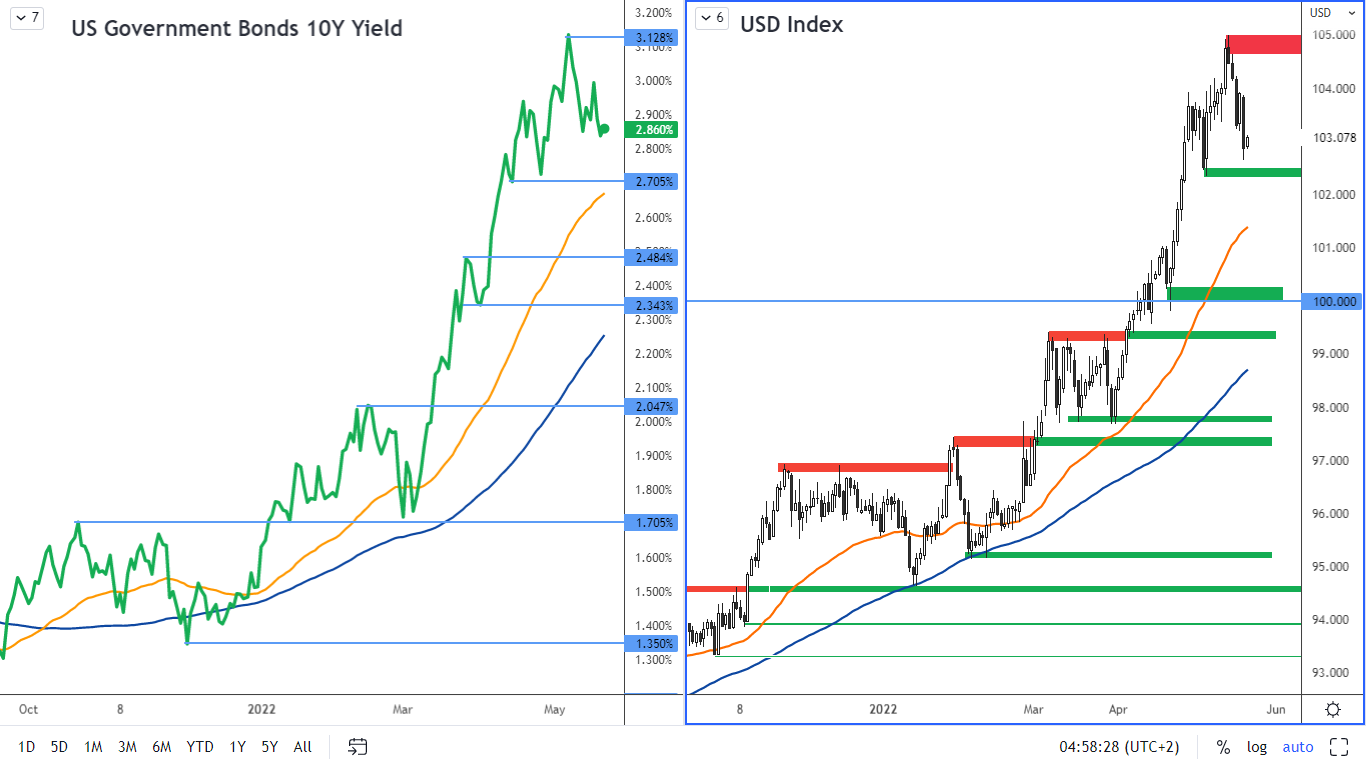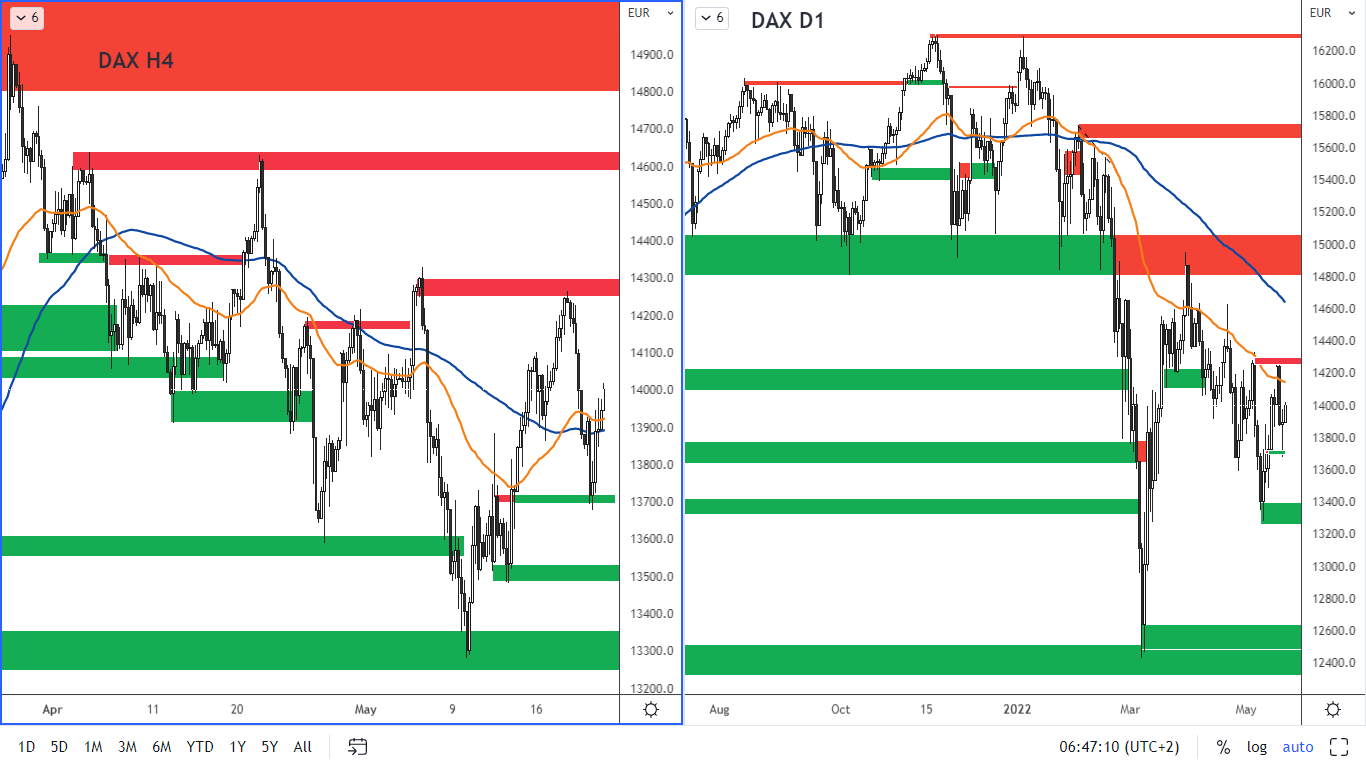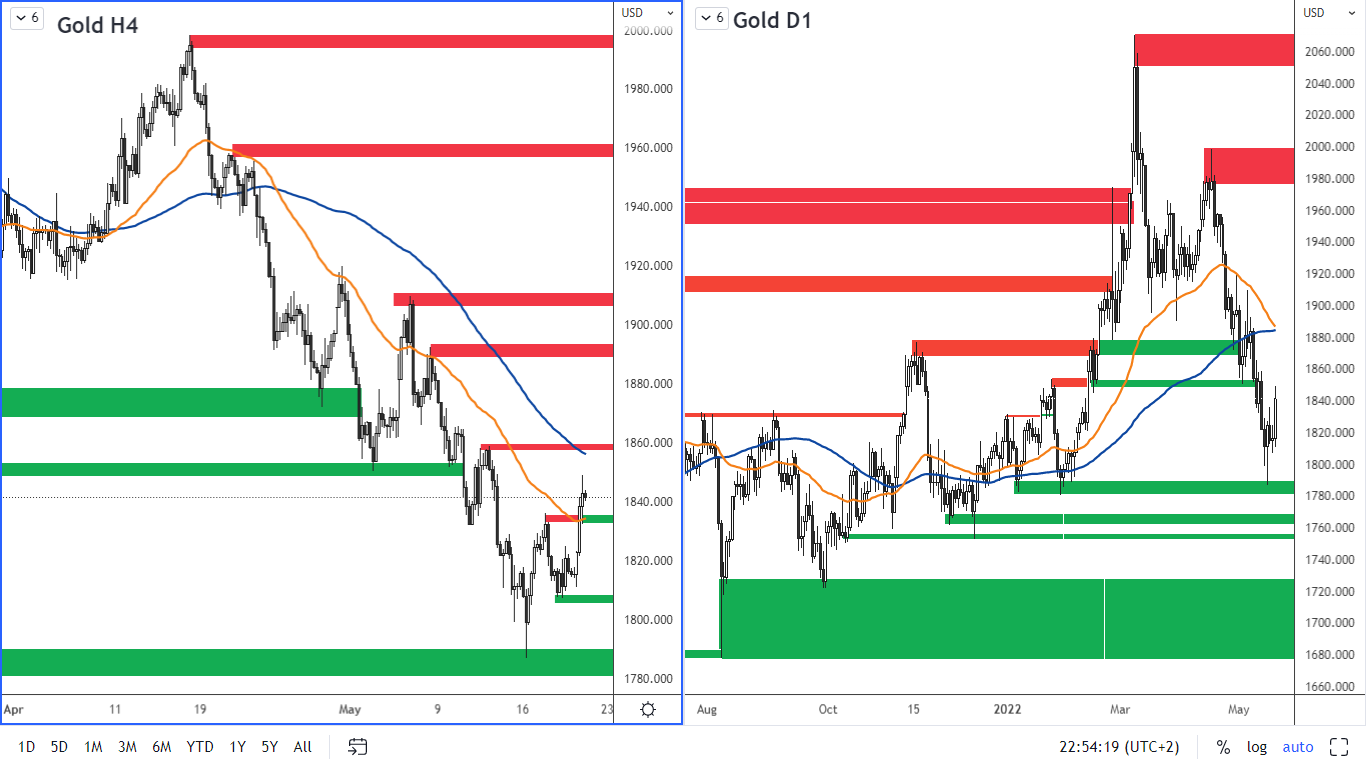The Swing Overview – Week 20
The markets remain volatile and fragile, as shown by the VIX fear index, which has again surpassed the level 30 points. However, equity indices are at interesting supports and there could be some short-term recovery. The euro has bounced off its support in anticipation of tighter monetary policy and the gold is holding its price tag above $1,800 per troy ounce. Is the gold back in investors' favor again?
Macroeconomic data
The week started with a set of worse data from the Chinese economy, which showed that industrial production contracted by 2.9% year-on-year basis and the retail sales fell by 11.1%. The data shows the latest measures for the country's current COVID-19 outbreak are taking a toll on the economy.
To support the slowing economy, China cut its benchmark interest rate by 0.15% on Friday morning, more than analysts expected. While this will not be enough to stave off current downside risks, markets may respond to expectation of more easing in the future.
On a positive note, data from the US showed retail sales rose by 0.9% in April and industrial production rose by 1.1% in April.
Inflation data in Europe was important. It showed that inflation in the euro area slowed down a little, reaching 7.4% in April compared to 7.5% in March. In Canada, on the other hand, the inflation continued to rise, reaching 6.8% (6.7% in March) and in the UK inflation was 9% in April (7% in the previous month). Several factors are contributing to the higher inflation figures: the ongoing war in Ukraine, problems in logistics chains and the effects of the lockdown in China.
Concerns about the impact of higher inflation are showing up in the bond market. The benchmark 10-year US Treasury yield has come down from the 3.2% it reached on 9 May and is currently at 2.8%. This means that demand for bonds is rising and they are once again becoming an asset for times of uncertainty.

Figure 1: US 10-year bond yields and USD index on a daily chart
Equity indices on supports
Global equities fell significantly in the past week, reaching significant price supports. Thus, there could be some form of short-term bounce. Although a cautious rally began on Thursday, which was then boosted by China's decision to cut interest rates in the early hours of Friday, there is still plenty of fear among investors and according to Louis Dudley of Federated Hermes, cash holdings have reached its highest level since September 2001, suggesting strong bearish sentiment.
Supply chain problems have been highlighted by companies such as Cisco Systems, which has warned of persistent parts shortages. That knocked its shares down by 13.7%. The drop made it the latest big-stock company to post its biggest decline in more than a decade last week.
The main risks that continue to cause volatility and great uncertainty are thus leading investors to buy "safe" assets such as the US bonds and the Swiss franc.
 Figure 2: The SP 500 on H4 and D1 chart
Figure 2: The SP 500 on H4 and D1 chart
From a technical analysis perspective, the US SP 500 index continues to move in a downtrend as the market has formed a lower low while being below both the SMA 100 and EMA 50 moving averages on the H4 and daily charts. The nearest resistance is 4,080 - 4,100. The next resistance is at 4,140 and especially 4,293 - 4,300. Support is at 3,860 - 3,900 level.
German DAX index
The index continues to move in a downtrend along with the major world indices. The price has reached the support which is at 13,680 – 13,700 and the moving average EMA 50 on the H4 chart is above the SMA 100. This could indicate a short-term signal for some upward correction. However, the main trend according to the daily chart is still downwards. The nearest resistance is at 14,260 - 14,330 level.
 Figure 3: German DAX index on H4 and daily chart
Figure 3: German DAX index on H4 and daily chart
The euro has bounced off its support
The EUR/USD currency pair benefited last week from the US dollar moving away from its 20-year highs while on the euro, investors are expecting a tightening economy and a rise in interest rates, which the ECB has not risen yet as one of the few banks.

Figure 4: The EURUSD on H4 and daily chart
Significant support is at the price around 1.0350 - 1.040. Current resistance is at 1.650 - 1.700.
The Gold in investors' attention again
The gold has underperformed over the past month, falling by 10% since April when the price reached USD 2,000 per ounce. But there is now strong risk aversion in the markets, as indicated by the stock markets, which have fallen. The gold, on the other hand, has started to rise. Inflation fears are a possible reason, and investors have begun to accumulate the gold for protection against rising prices.
The second reason is that the gold is inversely correlated with the US dollar. The dollar has come down from its 20-year highs, which has allowed the gold to bounce off its support.
 Figure 5: The gold on H4 and daily chart
Figure 5: The gold on H4 and daily chart
The first resistance is at $1,860 per ounce. The support is at $1,830 - $1,840 per ounce. The next support is then at $1,805 - $1,807 and especially at $1,800 per ounce.